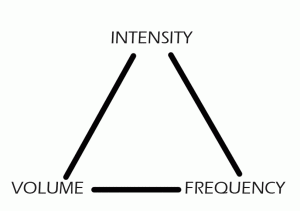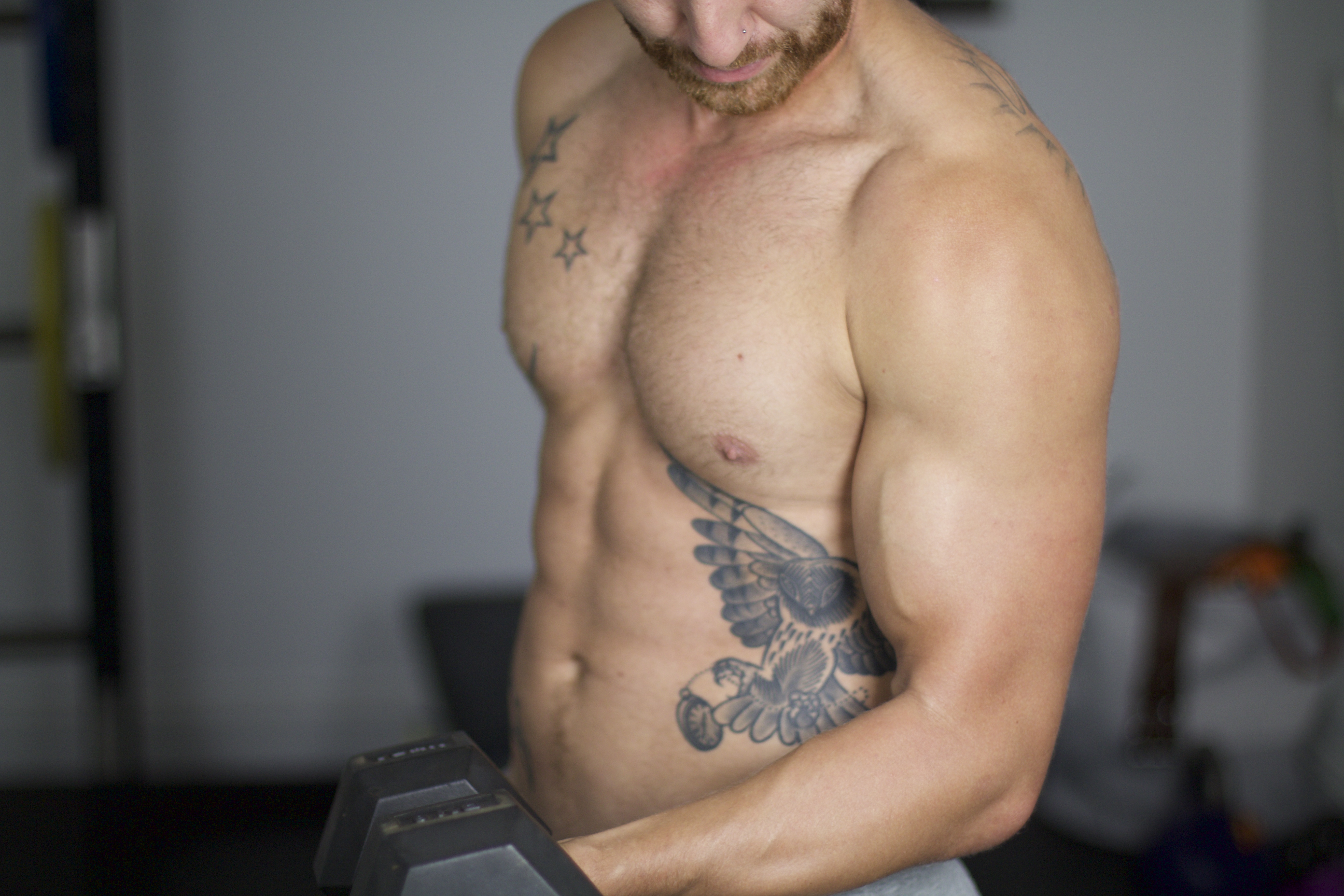So if you’ve come straight over from the channel and seen the video that accompanies this post then you will have a pretty good idea where we’re going with this one and maybe you just want a little more clarification or understanding. For those of you who have not yet watched the video, today we’re talking about building muscle and more specifically the variables to consider to ensure you’re going to build as much muscle as possible for you.
Volume – Intensity – Frequency
Let’s start with a picture

Ok so let’s look at this as your ‘muscle building triangle of success!!! When the goal is to build muscle and you’ve got your nutrition and sleep nailed, as well as focussing on progressive overload but you’re still having little to no success in building muscle. That’s where these three come in to play.
Bare in mind that progressive overload alone will give you good progress especially as a beginner lifter, but as your body becomes accustom to your training things will have to change and sometimes that means more than just increasing the weight.
Intensity – Is simply how intense your workout is, however this intensity is in relation to weight on the bar not how sweaty you get or how many times you’re sick during the workout.
You’ve heard people talking about their ‘1 rep max’ or ‘8 rep max’ right? These are simply used to determine or track the intensity of the workout, the closer the weight you are lifting is to your 1 rep max the more intense that set or exercise is.
When we’re looking at intensity we also associate it with strength and strength gains.
It’s always a balancing act between Volume, Intensity, frequency and your goals, concentrating on any one too much can take away from the others. For instance if your goal is strength gains which is typically heavy weight (intense), Low reps and long rest but you start heavily increasing your reps and exercises AKA adding more volume then your will fatigue & can expect this to take away from the weight you can lift and thus your strength gains.
Volume – This simply means how much, the number. How many reps per set, per session, per week or even per month or year. It can even be measured in how many pounds or kg’s you move in a given time frame.
Most body builders who’s primary goal is to build and keep as much muscle as possible will normally work with volume in mind. They will also choose an intensity that fits their rep range normally 40-60% of their one rep max as their rep range will often be 10 or more repetitions per set. Of course this can change as volume could be associated to the total amount of work done in a session for example if you do 3 exercises using 3 sets of 6 reps it would be quite intense. However if you added another 3 exercises on or even just added more sets then you have increased the volume of your workout without increasing the reps in any particular set. This could be a good way of increasing your progress in strength gains or your could keep your training the same and add a extra session a week providing your recover doesn’t suffer.
Volume basically allows you to subject your muscle to more time under tension and simply more time working out, it’s basically a form of progressive overload as are frequency and intensity.
The main thing to consider with adding more volume is recovery and the risk of potentially over training which halts gains’ fast! This brings us on nicely to Frequency.
Frequency – Basically means how often, how often you train, how often you hit a certain muscle group or movement pattern etc. Frequency in my opinion is the key, increasing volume is fantastic if frequency isn’t already high and high intensity for strength training is perfect as long as frequency and volume are balanced.
Anyway you look at it you have to balance them off against each other!
Most of the time you will hear the phrase ‘high frequency training’ or ‘low frequency training’ to keep it simple low frequency typically will mean training anything from 2 or less times per week. So if you train your legs once a week and have been training for a while this would be considered low frequency. If you trained them 3-4 or even more times per week that’s high frequency. It’s also relative to the person 3 leg sessions a week would be high intensity to me, but to a olympic power lifter it won’t be.
So why is this important? Well we get asked all the time a very similar set of questions when it comes to building muscle.
My weights aren’t going up, why?
Why do I feel tired all the time?
Why am I not getting any bigger?
We’ve even asked ourselves these same questions and many more like it. We look at this triangle just the same as we would with nutrition it’s simply just giving you the tools to ask the next round of questioning and getting the answers from yourself and your own investigation of your diet or training.
Ask yourself are you getting your desired results and if not could it be due to any of the above?
Example – You’re smashing it in the gym and you want to get stronger, for the last 2 months your weights haven’t increased on your squat.
Frequency – 1x leg session per week
Intensity (per session) – 70% of 1 rep max
Volume (per set) – 6-10 reps
What’s going wrong? From my point of view I look at two factors being slightly off here, frequency and volume, sort these and progress will be seem. Frequency, although 1 leg session a week can feel plenty your body is accustomed to it and often ready for more, remember you grow stronger because your body adapts to the stress you put on it.
With increasing the frequency I would also change the rep rage to suit more strength gains, a least one of my squat session would work on a lower rep range to better suit strength gains.
I hope this helps team, and further questions just leave a comment below.


